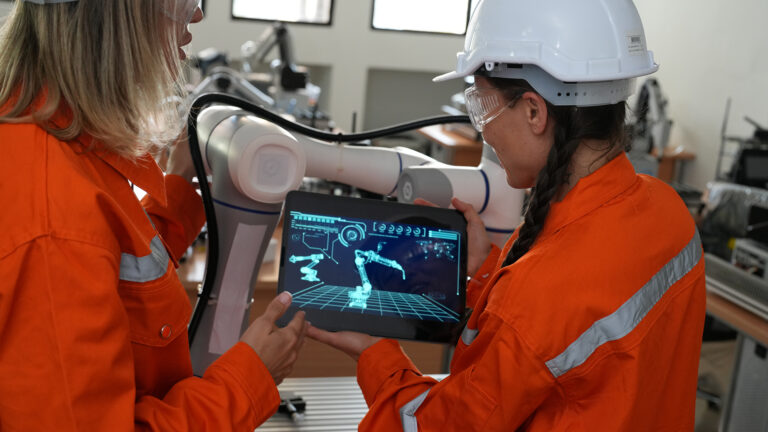The mining industry is rapidly adopting automation and incorporating digital technologies throughout its operations. All of these transformative digital applications require critical network connectivity to run the business and, given the nature of mining operations, mobile wireless communications are essential.
Exploration and prospecting
Modern mineral exploration relies on geophysical and geochemical technologies that analyze soil, rock, water, vegetation and steam. Technologies such as tomographic imaging, laser and X-ray fluorescence, near-surface seismic imaging and aeromagnetic surveys with drones generate enormous amounts of data.
Field operations often take place in remote areas underserved by communications networks. Prospectors and field engineers are forced to carry laptops, hard drives and USB keys to collect, transport and deliver data.
A reliable alternative to solve these challenges is an LTE-based deployable solution from Nokia, incorporating carrier-grade Nokia Flexi Zone small cells and integrated core technology. Together with a satellite link or microwave link at the base camp, this solution can provide high-bandwidth mobile connectivity, even in the most remote locations, for sensors, field equipment and more, both to collect data and to provide field workers with remote data access and remote processing capability.
In addition, the initial network can be easily expanded as field operations grow, to accompany the mine from start-up to full-scale operations.
Automated drilling and blasting
At the Kiruna mine in northern Sweden, for example, remote-controlled electric drills are used in conjunction with automated ore-handling equipment. Remote operators operate three drills at a time aided by mapping software to perform precision blasting. After blasting, automated loading, hauling and dumping machines transport the mined ore to load automated trains.
Rio Tinto operates 20 automatic drilling rigs in the Pilbara, Western Australia. One operator, located almost 2,500 km away in Perth, operates four rigs at a time and oversees key points in the process. The wells are drilled in a preset order at the locations and depths loaded into the system. This allows for much greater accuracy and near-continuous operation. Over one year, they ran an average of 1,000 hours more per well than conventional drilling rigs.
In all cases, industrial wireless technology is required for video surveillance, sensor data collection and remote software coordination of drilling rigs and drilling operations. This careful software coordination of equipment reduces drilling cycle times and improves equipment and personnel safety. Drill data is also analyzed remotely to dynamically adapt the blasting process to increase safety and efficiency.
Automated and remote operation for loading, hauling and train operations
In January 2019, Komatsu announced that its FrontRunner Autonomous Haulage System (AHS) had been enabled to run on private LTE in commercial operations, paving the way for the availability of an ultra-reliable and safe system. The company completed a year-long pilot testing program.
At the end of 2017, Caterpillar reported that it had 100 autonomous trucks operating on three continents. The largest fleet comprised of 54 autonomous trucks achieved 20 percent higher productivity.
The loading of trucks and rail cars can be partially or fully automated. Key moments in the loading process may, for example, require the supervision and intervention of an operator. The employee can work in a more comfortable and safer environment, without being exposed to health or safety risks. Remote control of the machines can be transmitted on the spot to other operators, ensuring continuous use of the machines even when operators take a break.
Worker safety and mission-critical communications
Personal protective equipment (PPE) is the ultimate defense barrier for workers. Traditionally, we refer to equipment such as hard hats, ear muffs, face masks and steel-toed boots, but today smart technologies are being integrated into PPE.
This new class of equipment includes communications integrated into earmuffs and helmets, display screens and integrated environmental sensors to monitor heat, sound and the impact of chemicals and gases. Smart PPE can also be used in conjunction with geo-referenced perimeter LTE applications to alert miners of prohibited areas.

Situational awareness to prevent accidents
Situational awareness through video coverage and mass screening is key to the safety and sustainability of future mining operations and personnel.
For 360-degree situational awareness, the wireless network must be able to meet the demanding bandwidth demands of video cameras throughout the coverage area, including mines, railroads and ports. Many of these cameras may be mounted on mobile vehicles or drones.
Predictive maintenance through IoT and analytics
Mining equipment maintenance and repair pose challenges in planning equipment usage. Breakdowns and unscheduled maintenance of aging assets can wreak havoc.
Predictive maintenance applications leverage the propagated coverage of LTE to collect data from Internet of Things (IoT) sensors across the mine and feed asset management and advanced data systems. Having all critical mine operations use the same private LTE network collaborates to unite large, siloed data streams and get maximum benefit from analytics engines.
The general advantages of private LTE
Decision-makers in mining operations often consider the advantages of different technologies based on specific use cases. In addition to the specific applications we reviewed, we can add the benefits that a private LTE network brings to the entire mine.
Any application requiring wireless connectivity, and even some that could be served by a wired connection, can be solved with 4.9G/LTE and 5G technology. This is because LTE and 5G have the capacity to handle the bandwidth needed to both power HDTV cameras and support low-power sensor and IoT networks.
Both LTE and 5G are as reliable as a dedicated wired network, but much more flexible. Through network segmentation, a single LTE or 5G network can provide multiple applications with dedicated resources and quality of service programmed with specific parameters for each use case.



